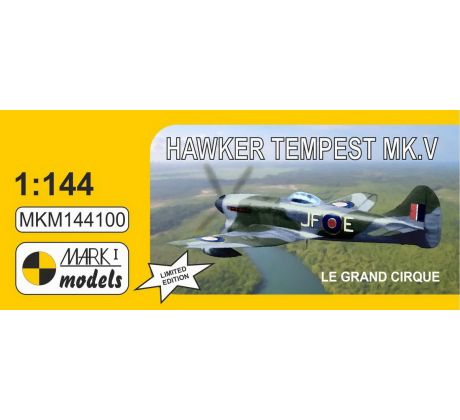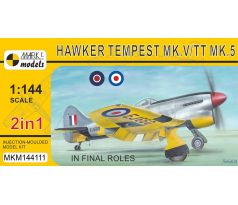Tempest Mk.V 'Le grand cirque' (Clostermann)

Tempest Mk.V 'Le grand cirque' (Clostermann)
Description: This injection-moulded kit (one model is included) contains 46 parts and one clear part (the cockpit canopy). A comprehensive decal sheet is included.
Colour schemes included in the kit:
1) Hawker Tempest Mk.V (Srs.2), EJ536, Sky US-W, No.56 Sq., Royal Air Force, Volkel airfield (B-80), the Netherlands, early April 1945
2) Hawker Tempest Mk.V (Srs.2), EJ536, Sky US-W, No.56 Sq., Royal Air Force, Volkel airfield (B-80), the Netherlands, early April 1945
3) Hawker Tempest Mk.V (Srs.2), NV994, Sky JF-E, No.3 Sq., Royal Air Force, Fassberg Air Base (B-152), Germany, April 1945
Hawker Tempest Mk.V (Srs.2), NV994, Sky JF-E, No.3 Sq., Royal Air Force, British Air Forces of Occupation (BAFO), Fassberg Air Base (B-152), Germany, May/June 1945
4) Hawker Tempest Mk.V (Srs.2), NV724, Sky JF-E, No.3 Sq., Royal Air Force, British Air Forces of Occupation (BAFO), Lubeck-Blankensee Air Base (B-158), Germany, August 1945
| Ref. No.: | MKM144100 |
| Availability: | IN STOCK |
Tempest Mk.V 'Le grand cirque' (Clostermann)
Hawker Tempest Mk.V 'Le grand cirque' (The Big Show) (Royal Air Force-aircraft flown by W/Cdr P.H. Clostermann)
The Hawker Tempest Mk.V was the RAF's last piston-engined fighter used in the WWII, attaining great success in destruction of the German V-1 flying bombs. Developed in late 1941 from the troublesome Typhoon interceptor, the prototype flew in September 1942. The first order was for 400 Tempests, produced as the Mk.V Series 1 (100 a/c by Hawker) and Series 2 (300 a/c by Gloster); the first aircraft were completed in mid-1943. A further two orders for Hawker-built Mk.V Srs.2 aeroplanes raised the total of the Tempests produced to 801.
It was a single-seat monoplane aircraft, of all metal construction, powered by a Napier Sabre II engine. DH or Rotol four-bladed propellers were used. It featured a bubble canopy and a retractable undercarriage. The Srs.1 aircraft had four long-barrelled 20mm Hispano cannons in the wings, while the later Tempests had cannons without projecting barrels. The Srs.2 aircraft could also carry 45-gal drop tanks. In its later guise, the Tempest could perform as a fighter-bomber, carrying a wide variety of bombs up to 1000 lbs. From early 1945 it was cleared for rocket firing and combinations of 25lb or 60lb RP could be carried.
Tempest Mk.Vs were delivered to the RAF and RNZAF squadrons between April 1944 and July 1945, ultimately equipping nine fighter units and one auxiliary squadron.
During the advance of Allied forces into Germany, ground attacks, close-support sorties and pursuit of Luftwaffe aircraft were the main tasks of the Tempests. After VE-Day the Tempest Mk.Vs soldiered on with seven squadrons of BAFO in Germany, and the last units retained their aircraft until early 1948.
Products purchased together with this product
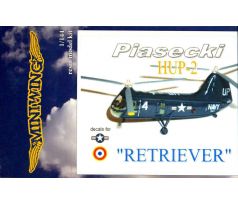
Piasecki HUP-2 Retriever
American transport helicopter
Description:
18 resin parts
clear vac canopy
decals for two versions
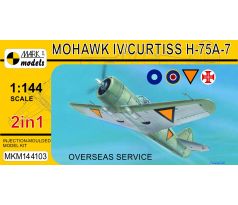
Mohawk IV/Curtiss H-75A-7 'Overseas Service'
Two injection-moulded kits are supplied in this box and each kit contains 21 parts and four clear parts (the cockpit canopy, rear windows and a landing light). A comprehensive decal sheet is included.
1) Curtiss Mohawk Mk.IV, BS734, Grey A, ‘Joe Soap II’, No.155 Sq., Royal Air Force, Imphal airfield, Northeast India, late 1943
2) Curtiss Mohawk Mk.IV, BB977, Black D, No.5 Sq., Royal Air Force, Agartala airfield, Northeast India, January 1943
3) Curtiss H-75A-7, s/n C-332, Black C332, 1-VLG-IV (1st Sq., 4th Aircraft Group), Royal Netherlands East Indies Army Air Force (Militaire Luchtvaart – Koninklijk Nederlandsch-Indisch Leger, ML-KNIL), Madiun airfield, Java, Netherlands East Indies, early 1941
4) Curtiss Mohawk Mk.IV, 485 (ex-RAF Mohawk Mk.IV, s/n unknown), White XY-F/485, ‘XY’ Flt., E.E.C. 3 (Esquadrilha Expedicionária n° 3), Portuguese Air Force (Aeronáutica Militar), Ota airfield (BA 2), Portugal, summer 1943
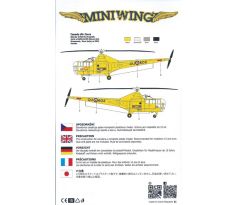
Sikorsky H-5 DRAGONFLY
US Helicopter
Description:
26 Plastic parts from clear material
Canopy mask
Decals for 1 helicopter of Canadian AF
1 Bagged kit
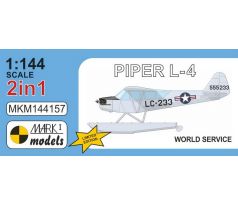
Piper L-4 ‘World Service’
Bagged Edition
Two injection-moulded kits are supplied in this box and each kit contains 24 parts and four clear parts (fuselage halves, windshield and canopy roof panel). A comprehensive decal sheet is included.
Colour schemes included in the kit:
1) K-68 (Piper L-4H), White 26 (s/n unknown), Air Force Command of the District 3 (VL 3. O), Czechoslovak Air Force, Brno-Černovice airfield, Czechoslovakia, 1946-47
2) Piper L-4J Grasshopper, White R-306 (s/n 45-4720), 17th Reconnaissance & Artillery Observation Squadron (VARWA), Royal Netherlands East Indies Army Air Force (Militaire Luchtvaart – Koninklijk Nederlandsch-Indisch Leger, ML-KNIL), Batavia airfield, Netherlands East Indies, 1948-49
3) Piper L-4H Grasshopper, White YC (s/n 43-29248), ‘Puce’, 23rd Artillery Observation Aviation Section (SOAA), 2nd Group, 64th African Artillery Regiment (RAA), French Army Artillery Observation Aviation (ALOA), Sessa Aurunca (Minturno) airfield, Italy, spring 1944
4) Piper L-4J Grasshopper, Black LC-233 (s/n 45-55233), U.S. Air Force, assigned to the Civil Air Patrol, U.S.A., 1949


